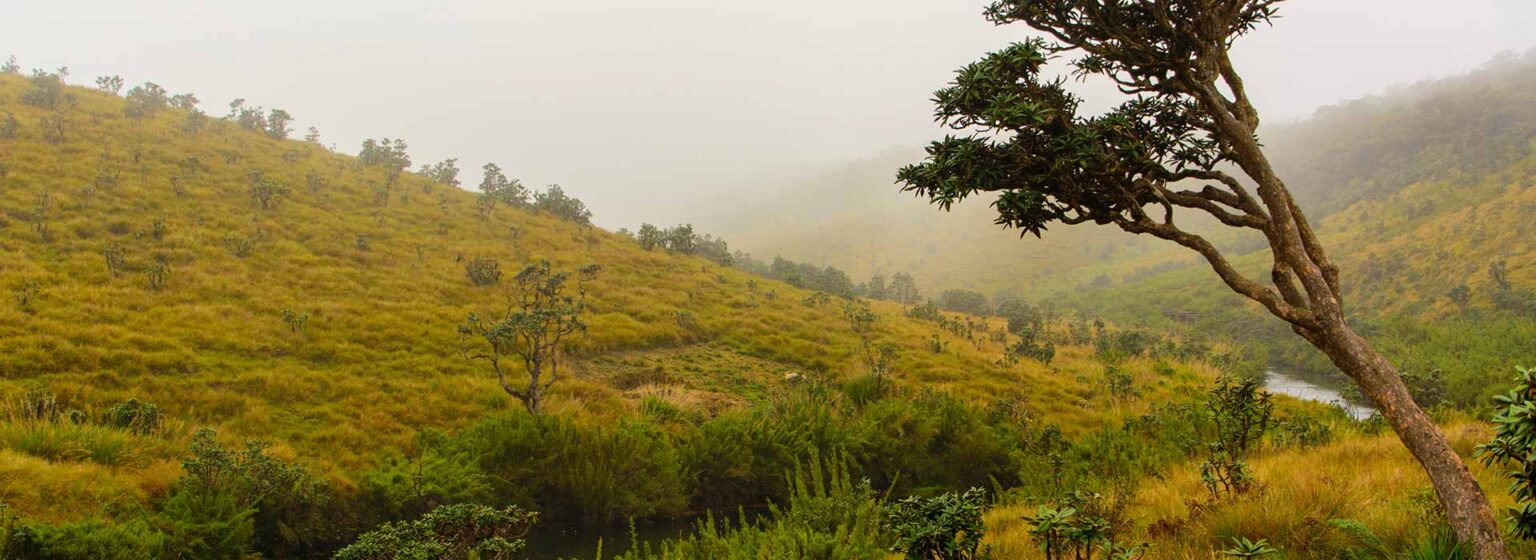Introduction
Horton Plains National Park is one of Sri Lanka’s most treasured natural attractions, boasting a stunning array of wildlife and natural scenery. The park, which covers an area of approximately 31 square kilometers, is located in the central highlands of Sri Lanka, in the Nuwara Eliya District. It was designated as a national park in 1988 and has since become a popular destination for both local and international visitors.
Location and Geography
The park is located approximately 2000 meters above sea level and covers an area of approximately 31 square kilometers. The park’s terrain is characterized by rolling hills, lush forests, and open grasslands, offering visitors a range of breathtaking landscapes to explore. The climate in the park is cool and temperate, with temperatures ranging from 5°C to 27°C.
Flora and Fauna
Horton Plains National Park is home to a rich variety of plant and animal life. The park’s vegetation is characterized by montane grassland and cloud forest, with a range of rare and endemic species that are unique to the region. Among the flora, visitors can find various species of orchids, ferns, and rhododendrons. The park is also home to several species of mammals, including sambar deer, wild boar, and the endemic purple-faced langur. Birdwatchers can look out for over 80 species of birds, including the Sri Lankan blue magpie and the yellow-eared bulbul.
Tourist Attractions
The park offers visitors a range of activities and attractions to explore. One of the most popular activities is hiking, with several trails and trekking routes that offer stunning views of the park’s landscape. The park is also home to several waterfalls, including the Baker’s Falls and the World’s End waterfall. Visitors can also enjoy birdwatching, with a range of species that can be spotted throughout the park.
History and Conservation
Horton Plains National Park has a rich history, with evidence of human habitation dating back over 5,000 years. The park was designated as a wildlife sanctuary in 1969 and later became a national park in 1988. The park is now recognized as a UNESCO World Heritage Site and is actively protected through conservation efforts and initiatives. The park’s conservation programs include the protection of endangered species such as the Horton Plains slender loris and the leopard.
Accommodations and Facilities
Visitors to the park can choose from a range of accommodations, including guesthouses and lodges within the park or in nearby towns. The park has several entrance gates, including the main entrance near the town of Ambewela and another near the village of Pattipola.
Trekking and Hiking
The park offers several trekking and hiking trails for visitors to explore. The most popular trail is the World’s End Trail, which leads to a sheer cliff with a drop of about 1,200 meters. The trail is about 9 km long and takes about 3 to 4 hours to complete. Another popular trail is the Baker’s Falls Trail, which leads to a picturesque waterfall. The trail is about 3 km long and takes about 1 to 2 hours to complete. Visitors can also take a longer trek to Kirigalpoththa, which is the second-highest peak in Sri Lanka.
Climate and Weather
The climate of Horton Plains National Park is classified as a tropical montane climate. The park experiences two main seasons: the wet season, which lasts from April to September, and the dry season, which lasts from October to March. The average temperature in the park is around 15°C, but temperatures can drop to around freezing during the winter months.
Tourism and Sustainability
Horton Plains National Park attracts a large number of visitors every year, which can have an impact on the park’s delicate ecosystem. To ensure the park’s sustainability, the Sri Lanka Department of Wildlife Conservation has implemented several measures, including limiting the number of visitors per day and promoting responsible tourism practices. Visitors are also required to follow a strict code of conduct, which includes not littering, not feeding the animals, and not disturbing the natural habitat.
Nearby Attractions
Horton Plains National Park is located in close proximity to several other attractions, including the town of Nuwara Eliya, which is known for its tea plantations and colonial architecture. The park is also close to several other natural attractions, including the Adam’s Peak mountain range and the Knuckles Mountain Range.
In conclusion, Horton Plains National Park is a must-visit destination for anyone traveling to Sri Lanka. With its unique ecosystem, breathtaking views, and rich biodiversity, the park offers visitors an unforgettable experience. Whether you are a nature lover, a trekking enthusiast, or simply looking for a peaceful escape from the hustle and bustle of city life, Horton Plains National Park has something to offer everyone.
https://en.wikipedia.org/wiki/Horton_Plains_National_Park
Read More Articles: Yang Adventure


